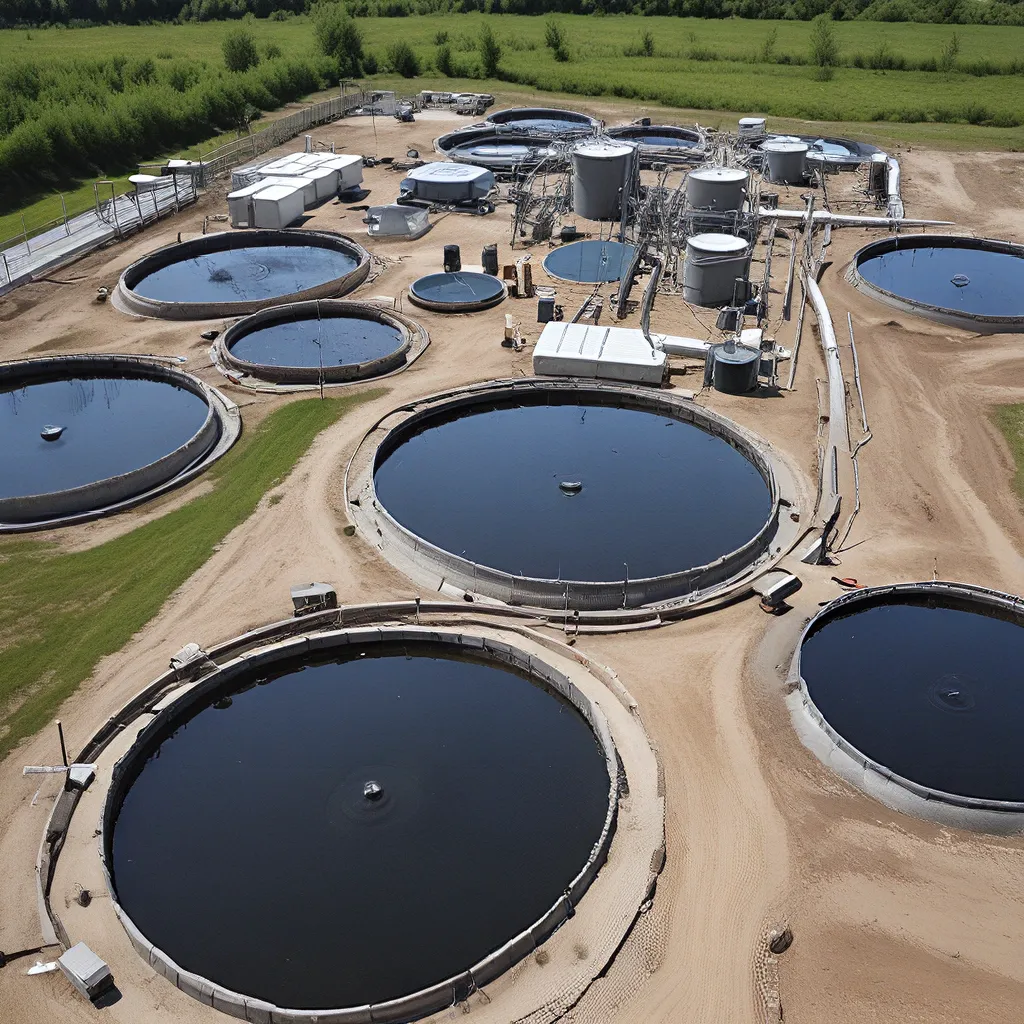
As I delve into the fascinating world of wastewater treatment, I can’t help but feel a sense of excitement. You see, this industry isn’t just about managing the dirty stuff – it’s about unlocking the hidden potential of our most precious resource: water. And let me tell you, the future of wastewater treatment is looking brighter than ever, thanks to the remarkable advances in renewable energy technology.
The Rise of the “Blue Energy” Revolution
Picture this: you’re standing on the edge of a coastal wastewater treatment plant, gazing out at the vast expanse of the ocean. What if I told you that the very salt in that seawater could be the key to powering the entire facility, and then some? This concept, known as “blue energy,” is the focus of some cutting-edge research, and it’s about to change the game.
According to the researchers at Stanford University, the energy generated from the mixing of seawater and freshwater, as it occurs in coastal wastewater treatment plants, could be an immense and untapped source of renewable energy. Their team has developed an affordable and durable battery technology that can harness this power, potentially making these facilities energy-independent and even capable of surplus power production.
Just imagine the implications: no more reliance on the unreliable power grid, no more worries about blackouts during natural disasters. Wastewater treatment plants could become self-sustaining powerhouses, generating their own clean energy and potentially even fueling nearby operations like desalination plants. It’s a game-changer, and it’s all thanks to the humble salt in our oceans.
Unlocking the Power of Salinity Gradients
The key to this revolutionary technology lies in the salinity gradient – the difference in salt concentration between freshwater and seawater. When these two waters mix, they release a significant amount of energy, which can be captured and converted into electricity. And the best part? This process is renewable, sustainable, and doesn’t require any upfront energy investment or charging.
The Stanford team’s battery design is particularly clever. It uses Prussian Blue and polypyrrole – materials that are relatively inexpensive and readily available – as the electrodes. When the battery is flushed with alternating exchanges of wastewater effluent and seawater, it creates a flow of ions that generates electricity. This constant discharge and recharge cycle means the battery is always actively producing power, without the need for any external energy input.
Imagine if your local wastewater treatment facility could tap into this renewable source of energy – the implications are truly staggering. Not only would it make the entire operation more energy-efficient and cost-effective, but it would also reduce the facility’s carbon footprint and make it less vulnerable to power grid disruptions.
Scaling Up for a Sustainable Future
Of course, as with any groundbreaking technology, there are still challenges to overcome before we see widespread adoption of blue energy in wastewater treatment. The researchers are currently working on scaling up their prototype battery to see how it performs in a real-world, municipal setting.
One key consideration is the power output per electrode area. While the initial lab tests showed promising results, the team acknowledges that the current output is still relatively low. But they remain optimistic, noting that the scale-up potential of their battery design is more feasible than previous technologies, thanks to its simplicity, constant energy creation, and lack of membranes or complex control mechanisms.
Other researchers are also exploring novel ways to harness the power of salinity gradients, such as using pressure-retarded osmosis or reverse electrodialysis to generate electricity. These alternative approaches may offer complementary solutions, each with their own unique advantages and challenges.
As the scientific community continues to push the boundaries of what’s possible, I can’t help but feel a sense of hope and optimism for the future of wastewater treatment. Who knows what other untapped sources of renewable energy are waiting to be discovered? The pursuit of energy neutrality is an ambitious goal, but with the ingenuity and dedication of researchers and engineers, I believe it’s within our reach.
Embracing the Future of Wastewater Treatment
So, what does all this mean for the average person? Well, for starters, it means that the wastewater treatment facilities in your community could soon be powering themselves and potentially even contributing excess energy to the grid. That’s a pretty remarkable thought, isn’t it?
But beyond the energy benefits, this technology also has the potential to improve the overall resilience and reliability of our wastewater infrastructure. Imagine a world where these critical facilities are immune to power outages and other disruptions, ensuring that our communities always have access to clean, safe water.
Of course, the journey to this future isn’t going to be without its challenges. There will likely be technical hurdles to overcome, as well as regulatory and financial considerations to navigate. But if the passion and ingenuity of the researchers I’ve encountered are any indication, I’m confident that we’re up for the task.
After all, when it comes to the pursuit of energy neutrality in wastewater treatment, the possibilities are as vast and endless as the oceans themselves. So let’s dive in, explore the depths of this incredible technology, and unlock the power that’s been hiding in plain sight all along. Who knows what other marvels we might uncover along the way?